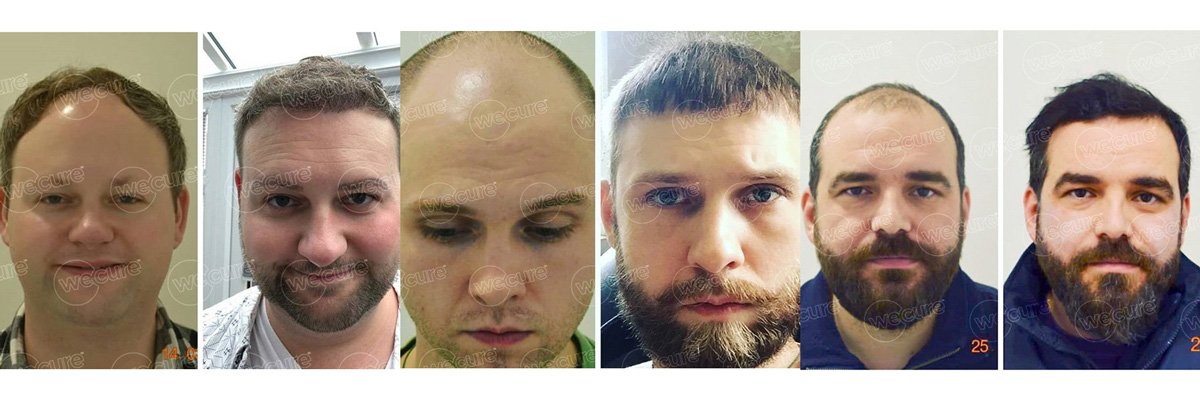What are the Different Types of Hair Transplants?
Get to know your hair options. Here are the different types of hair transplants available today.
People considering a hair transplant generally spend a lot of time researching what type of procedure will work best for them. As a result, a lot of time and energy is spent watching countless youtube videos. Before going down the rabbit-hole, begin your journey with us and learn about all of the modern types of hair transplants out there.
Follicular Unit Extraction (FUE):
Follicular Unit Extraction or FUE is perhaps one of the most performed hair transplant techniques and is considered the modern-day method of advanced hair replacement technology.
FUE Hair Transplants have major benefits. For one, it doesn’t require a strip of donor tissue to be taken from the donor area and better yet, no scarring. Using the FUE hair transplant technique, each follicular unit is extracted one-by-one directly from donor areas on the scalp with minimal discomfort and patients all claim that post-surgery is relatively pain-free.
Pros Include:
– FUE is less invasive than traditional methods
– FUE leaves no scars
– Fast healing
– Small to no pain
– Hair transplants for any part of the body
Direct Hair Implantation (DHI):
Direct Hair Implantation or DHI is the transplantation of harvested grafts using a DHI Pen, also called DHI Implanter, or CHOI Pen.
DHI uses the CHOI Pen to control the angle, depth, and direction of each new implanted follicle. A major advantage of the DHI technique is the ease of increasing hair density by implanting grafts between existing hairs. Also, there is no need for “canal openings” because the extracted grafts are directly implanted into the recipient area by using the CHOI pen.
Pros Include:
– Reduced time of grafts remaining outside of the body, thus ensuring strong and healthy grafts.
– Excellent hair follicle survival rates.
– Reduced bleeding
– Faster recovery
– The recipient site does not have to be shaved

Sapphire Hair Transplant
Sapphire Hair Transplant FUE is similar to the previous technique except these blades are made from a precious gemstone that utilises a different method for canal opening in the recipient area.
Using the Sapphire FUE technique, the canals or the holes are opened by the special sapphire blades with superfine needles instead of slits in the Classic FUE.
In short, the holes have a round shape instead of a lateral one, but this way, each hole will have precisely the same size as the diameter of the hair follicles which means each hole is very small and very tiny.
With the Sapphire FUE method, it is possible to open smaller channels with circular incisions (thanks to the sapphire blades). Therefore, the recovery is shorter than the one with Classic FUE.
Sapphire FUE guarantees a higher percentage of hair regrowth for each hair follicle, thanks to smaller channels that prevent the shift or movement of hair follicles.
Pros Include:
– Incisions are precise and even
– Smoother incisions (micro incisions)
– Incisions of the sapphire blades can be adjusted.
– The possibility of germs attaching to this surface and the risk of infection are reduced.
Body Hair to Head Transplant (BHT):
Body Hair Transplant or BHFUE expands the donor “bank” making this popular among men who do not have a sufficient supply of hair.
The possibility, as our hair transplant experts tell us, depends on several variables, such as the similarity of the hair between body and head, the size of the donor area and the length of the body hair. The body hair growth cycle is different from that of scalp hair. Over the period of 12-18 months, the transplanted hair matures, resulting in permanent and completely natural hair growth.
Pros Include:
– More donor areas
– Thicker density, which means more coverage
– Hair units are separated trimmed, cleaned and maintained
Cons:
– Healing will take longer
Needle-Free Jet Injector Hair Transplant
Needle-Free (Numbing) Injectors or Jet Injectors uses high air pressure to inject a local anesthetic medication into the skin through its silicon heads. The air pressure ensures an ultra-fast (less than a third of a second) penetration through the skin.
Jet Injectors decreases the pain by 70% and gives comfort to the patients who do not want injection by needle regardless of the reason why. You will not feel any pain. This device is used to numb the extraction and implantation areas before a hair transplant procedure.
Pros Include:
– No needles
– Reduced risk of infection
– Painless
– Superfast transfers means less chance of infections
Conclusion:
Harvesting, extracting, follicles, grafts… We know, it’s a lot! And we appreciate it if you made it this far, there is a lot to think about but you don’t have to do it alone. WeCure is here to answer any questions or concerns you may have and to help you decide the best Hair Transplant method appropriate for you.
Get in touch with us today for a free consultation.

Book a Complimentary Hair Consultation
Photo by Gustavo Leighton on Unsplash



